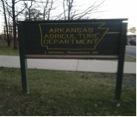 Tuesday, July 2, 2013 at 12:00PM
Tuesday, July 2, 2013 at 12:00PM Honorable Mention, Life as a Vet Student
Amanda Fischer, Cornell
My first year of veterinary school I never would have guessed that I would be writing an article for the Vet Gazette, let alone from a lab bench (when I should be in clinics). The tale of my love affair with bench work started when I was an undergraduate at Cornell. In my manic attempts to diversify my resume for veterinary school, I applied for an undergraduate research assistant position. I interviewed with John Parker, BVMS, PhD for the chance to work at the Baker Institute for Animal Health. He told me there were other applicants, so when I was hired I felt like I’d won something. It was the first job I’d applied for on my own. Once I started, most of my time was spent predictably re-stocking laboratory supplies, but my project is what kept me interested in research.
If anyone reading has done immunofluorescent staining you know how infuriating and rewarding the process can be. The first time I looked at feline cells that I had successfully stained for feline calicivirus protein, I was enthralled. I could have stared at those cells forever. I was looking at virus infected cells and was looking at the virus! In the cells! I was seriously impressed with myself. I tried to continue working in the lab, but there wasn’t funding for me to stay because he had a veterinary student working during that summer.
Fast forward to veterinary school, where I assume it’s common knowledge that the best way to make money over the summer is to conduct research. With our level of debt, it’s hard to say no to stable income and housing you’ve already paid for. I participated in Cornell’s Veterinary Investigator Program (VIP) my first summer. I actually got paired up with Dr. Parker, which was great because I could pretend like I already had an idea about what I was doing. I greatly enjoyed my incredibly frustrating project where I made no significant findings after 2 months. The fact that this didn’t deter me from continuing to go to lab and find projects to work on speaks volumes about my personality. I hope that my persistence will come in handy as a doctor. But for now it’s serving me well in terms of keeping me gainfully employed as a student. I also spent my second summer in the Parker lab, as a second year VIP participant. It was around that time that I learned about an interesting opportunity to take a year off from veterinary school to do research full time...
 Cornell,
Cornell,  pathology,
pathology,  research in
research in  Life as a Vet Student
Life as a Vet Student 


